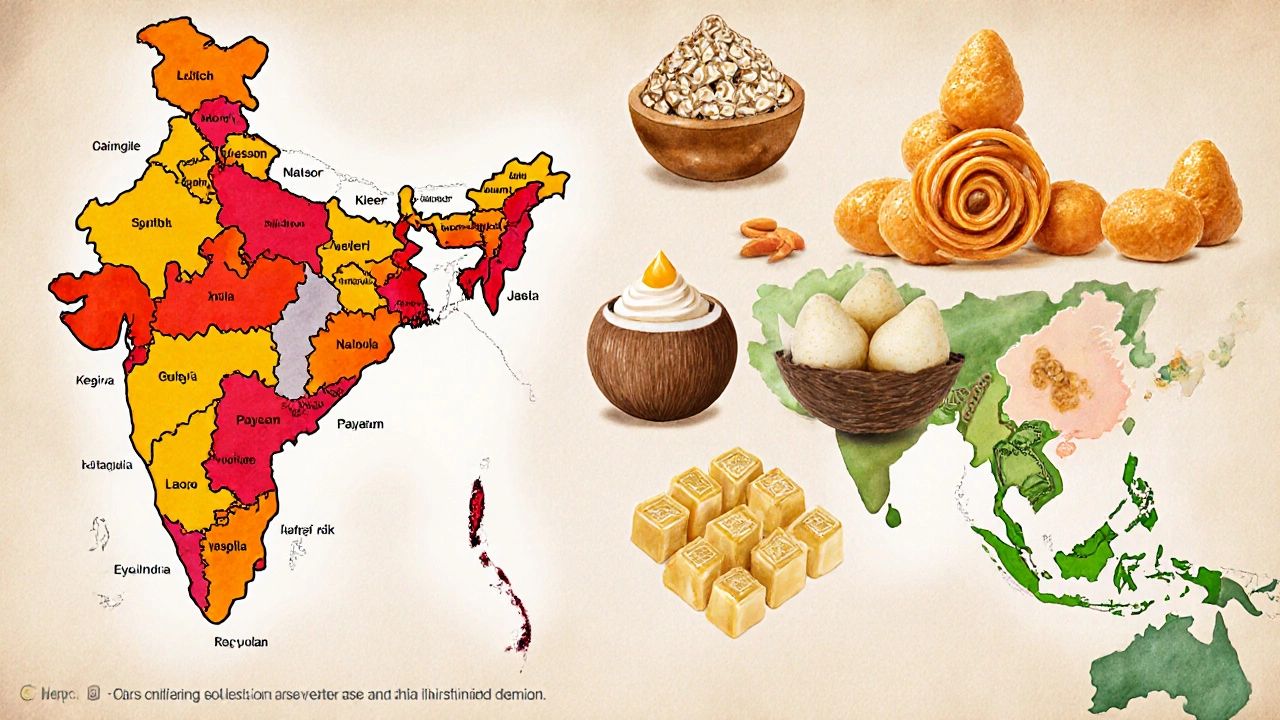Indian Sweets List: Types, Traditions, and What Makes Them Last
When you think of Indian sweets, a broad category of traditional desserts known as mithai, often made with milk, sugar, nuts, and spices, and deeply tied to festivals and rituals. Also known as mithai, these treats aren’t just dessert—they’re part of how Indians celebrate birthdays, weddings, Diwali, and even just a good day. You won’t find one single Indian sweets list that covers them all because every state, village, and family has its own version. From the sticky, syrup-soaked jalebi of North India to the coconut-rich peda of Maharashtra, and the sesame-and-jaggery laddoos of Tamil Nadu, the variety is endless. What ties them together isn’t just sugar—it’s meaning.
Why do people give sweets so often? It’s not just about taste. In Hindu tradition, offering prasad, a sacred food offering made during worship and then shared with others is a way to share blessings. Sweets symbolize joy, prosperity, and the sweetness of life. Even when you’re not at a temple, giving ladoos at a baby’s naming ceremony or barfi at a wedding isn’t random—it’s ritual. And it’s not just religious. In homes across India, a plate of sweets says, "I’m happy you’re here." That’s why you’ll find these desserts in grocery stores, street stalls, and fancy gift boxes alike.
Not all Indian sweets are created equal when it comes to health. Some are packed with ghee and sugar, while others use jaggery, nuts, or lentils to add nutrition. If you’re looking for a healthy Indian sweet, a dessert option that balances tradition with lower sugar, higher protein, or natural sweeteners, you’ve got choices—like besan laddoo made with gram flour, or coconut-based treats sweetened with dates. Even the oldest Indian sweets, like halwa made from wheat or carrot, have roots in Ayurveda, where ingredients were chosen for their digestive and calming properties. And yes, they go bad. Some last weeks in the fridge, others only days. That’s why knowing how to store them matters as much as knowing how to eat them.
Behind every sweet is a story—of fermentation, slow cooking, regional ingredients, and generations of hands shaping dough and syrup. The same way you wouldn’t skip learning how to make roti crisp, you shouldn’t ignore how to pick the right sweet for the right moment. Whether you’re curious about why fenugreek shows up in dosa batter or how paneer whey gets reused, you’ll see that Indian cooking doesn’t treat food as separate from culture, science, or survival. These sweets? They’re the same. They’re not just sugar. They’re memory, medicine, and celebration—all in one bite.
Below, you’ll find real guides on what sweets last longest, which ones are actually good for you, how they’re tied to festivals, and even which ones date back thousands of years. No fluff. Just what works, what matters, and what you can use today.
Popular Indian Desserts: A Sweet Journey Across India
Explore the most beloved Indian desserts, learn their regional roots, key ingredients, simple recipes, and when they’re traditionally served.
